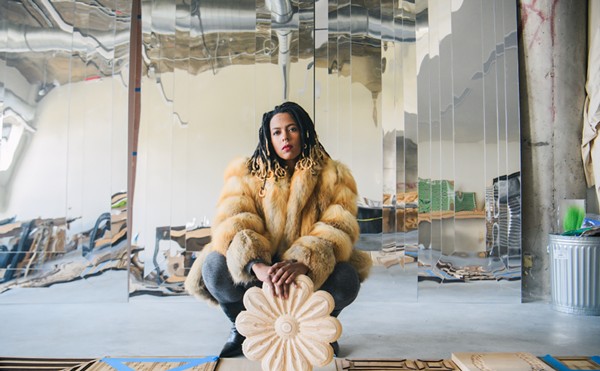Mick Jagger dropped by, and so did modern dance mavens Paul Taylor and Mark Morris. They all showed up in Bangalore, India, to visit Nrityagram, the artistic community that gives its name to a dance company.
The name, quite literally, means dance ('nritya') village ('gram'), says Surupa Sen, artistic director of the company, who is also a dancer, choreographer and resident of the southern Indian village. Her commune houses 10 to 15 dancers — along with some musicians and teachers — whose lives are dedicated solely to the re-creation of sacred Indian dance called Odissi. This week, in a rare stateside performance, Sen and nine of the Nrityagram dancers present Sacred Space, a special offering of their homegrown art form.
"The emphasis is on lyricism. If we freeze anywhere in the dance, it becomes a sculpture," she says.
Founded by Protima Gauri, who died in a landslide in 1998, the commune is supported solely by the earnings of the dance ensemble. There, the members of the company participate in intensive dance training and learn Indian literature, mythology, poetry, Sanskrit, music, philosophy and spiritual thought, as well as martial arts and yoga.
In America, the closest thing we've got to such a community is a place called "Yaddo" in Saratoga Springs, New York, where artists visit for up to two months at a time and can work in private and enjoy the social life. Former Yaddo residents include Truman Capote, Philip Roth, Leonard Bernstein and composer Richard Danielpour (who wrote 2004's Margaret Garner, a Michigan Opera Theatre world premiere).
According to Sen, Odissi had a revival approximately 70 years ago. "It existed for 2,000 years, but had segregated into two forms. One in the temple and one outside; it became a way of spreading religion."
But the dance reincarnation had impulses besides religious ones. Decades ago, theater actors discovered Odissi and "somehow a bunch of them came together and went back to [Hindu] literature and poets for inspiration. They formed an organization to study and codify the dance," Sen says. And while it was a secularized version of Odissi, the modern version retained many of the properties of its origin. "I fell in love with it instantly at age 12 or 13," Sen says. For the last 25 years, she has devoted herself to the art form.
"Sacred Space is the temple," Sen says. "But it means not just the temple of worship, but the body, and worshipping of the body." She believes the dances are built on the confluence of the Hindu and the human, and that the movement language resembles some of the more familiar forms seen in popular dance: Emotions are signaled by arms held above the head in graceful arcs; sinuous hands narrating; and larger-than-life eyes, emblazoned with makeup. Turns are precise and centered in the hips while feet are heel-toed to the stage. Sen's choreography moves at a rapid pace, and looks something like modern dance — though the dancers remain upright and do not fall or roll on the floor — and there's no partnering among the all-female dancers.
"The series of dancers are threaded together. There are groups, duets and solos (accompanied by violin, drums and vocalist), but the repertory is not simply 'traditional,'" Sen says. "It is unique choreography."
Special family preview performance at 11 a.m., Tuesday, April 18, and a regular performance at 8 p.m., Wednesday, April 19, at the Power Center, 121 Fletcher St., Ann Arbor; 1-800-221-1229. Tickets are $8-$36.
Michael H. Margolin writes about arts for Metro Times. Send comments to [email protected]




